Standalone culture diet significantly reduces requirement to heat water
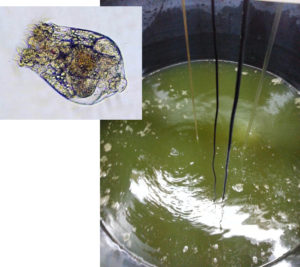
For the last quarter of a century, hatcheries have tended to apply the same labor-intensive batch culture system of rotifer production. This process, which usually involves three- or four-day batches, follows a protracted sequence of events in which rotifers are harvested, rinsed and put into an enrichment tank for a number of hours. After this, they are harvested again, then cleaned and finally fed to larval fish.
The more rotifers are handled, the greater the risk of damaging them becomes. Furthermore, fish are normally fed rotifers three to four times a day, which often requires repetitive separate rotifer harvesting and enrichment processes.
Rotifer enrichment trials
In order to verify the hypothesis that a well-formulated live food diet could avoid the use of an enrichment step, the authors conducted trials in which an existing algae-based rotifer culture diet was modified to slowly release the enrichment components, such as protein, fat, vitamins and minerals. The presence of nutrients at metabolizing concentrations allowed not only gut tissue filling but also gradually enriched the tissue of the rotifers without consuming excessive oxygen or eutrophication, which is a well-known problem under conventional enrichment conditions.
The experiment was conducted over several culture cycles to ensure the diet did not compromise the health or reproduction of the rotifers. Similar growth and reproduction figures were registered with the conventional rotifer diet and the standalone diet for a period of nine weeks, which corresponds with 15 rotifer cycles (Table 1). Feed-conversion ratios averaged 0.9 to 1.0, while egg ratios were 25 to 40 percent – similar to these for traditional diets.
O'Brien, Average growth, Table 1
| Day | Tank Volume (L) | Density (rotifers/mL) | Rotifers (million) | Egg % | Feed (g/million) | Feed (g) |
|---|---|---|---|---|---|---|
| 0 | 900 | 466 | 419.4 | 24 | 0.50 | 209.70 |
| 1 | 900 | 696 | 626.4 | 30 | 0.40 | 250.56 |
| 2 | 900 | 1,016 | 914.4 | 43 | 0.40 | 365.76 |
| 3 | 900 | 1,288 | 1,159.2 | 35 | 0.31 | 359.35 |
| 4 | 900 | 1,890 | 1,701.0 | 23 | – | – |
With a slow enrichment over one or two days, the standalone diet was naturally enriched to 80 to 90 percent, about the same as following a conventional enrichment process. After one three- to four-day cycle, the enrichment seen with the standalone diet was 100 percent that of the conventional procedure.
Analyses of the protein, fat, vitamin and mineral compositions of the rotifers were compared to those obtained after an enrichment treatment. The kinetics of the enrichment during the standalone culture trial and traditional culture and enrichment procedures are presented in Figures 1 and 2. The natural algae rotifer diet gave a basic enrichment between 10-15 mg/g (dry weight) during the four-day culture cycle. An enrichment diet with added proteins, phospholipids and marine oils enriched rotifers in two to four hours, while the standalone diet provided immediate enrichment.
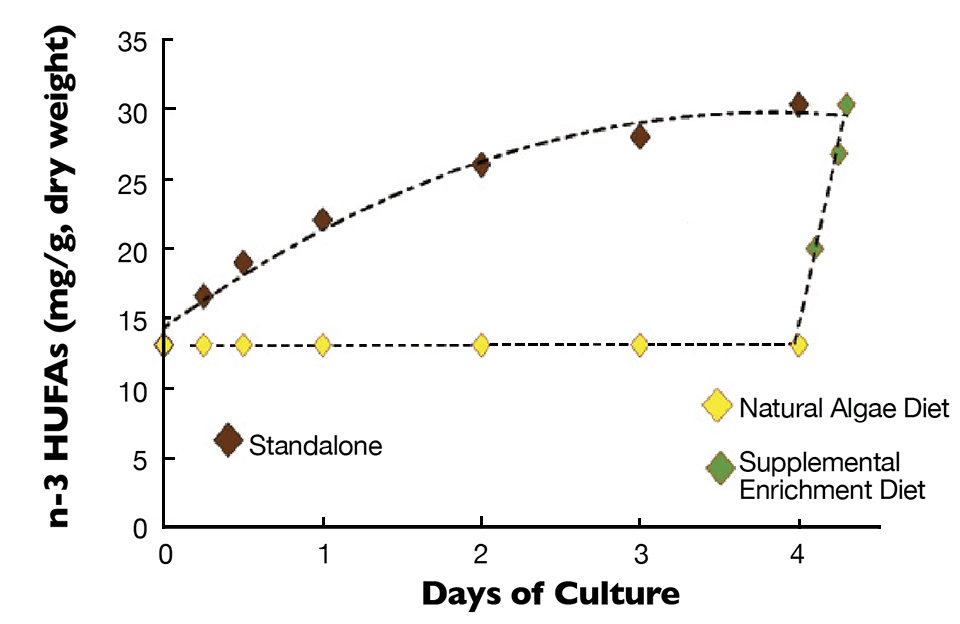
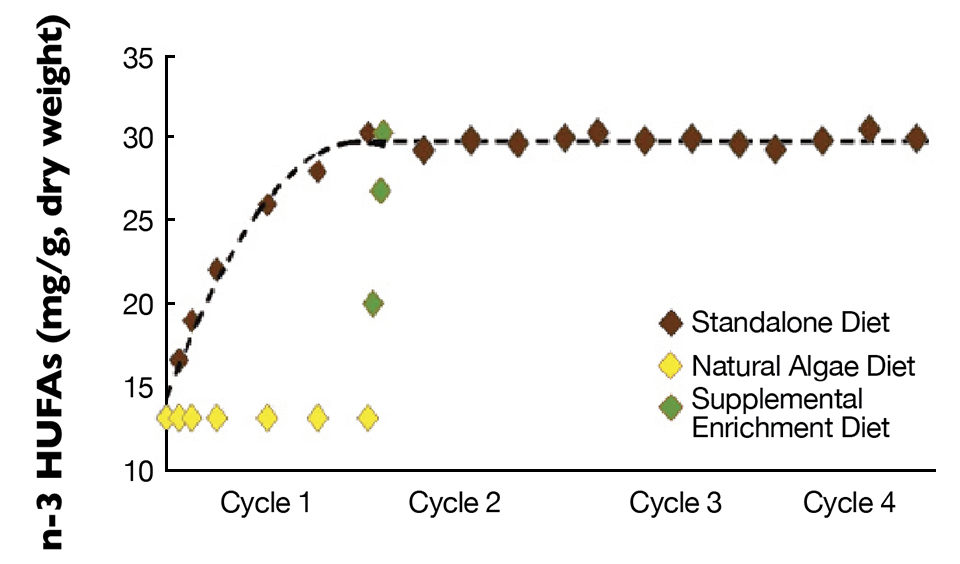
Varied advantages
The trials confirmed many gains can be had from establishing a standalone culture diet. Such a product makes rotifers immediately available to hatchery staff at any time during the culture cycle, and can result in significant labor and cost savings. Rotifers are enriched at 26 degrees-C, which requires hatcheries to heat a lot of water for both the enrichment and subsequent rinsing steps. A standalone culture diet significantly reduces that requirement and also simplifies the processes for hatchery managers so they can focus more on the quality aspects of cultivating rotifers.
Another benefit of using a standalone diet is it results in more stable rotifers. Since the rotifers incorporate the algae feed into their own biomass, the enrichment stays in the rotifers longer. Following the traditional enrichment process, rotifers are put into a very eutrophic environment filled with emulsions or fats. Removing the enrichment step all but eliminates the emulsion discharges into the environment during post-enrichment rinsing.
Final product
These findings and others led Skretting’s Marine Hatchery Feeds division to develop ORI-ONE, a commercial algae-based powder for rotifer production. No yeast or emulsion is used, and a wide particle size range is available, which results in more efficient uptake. The particles also come in a wide range of shapes, which gives better adhesion and retention within the rotifers.
(Editor’s Note: This article was originally published in the September/October 2013 print edition of the Global Aquaculture Advocate.)
Authors
-
Eamonn O’Brien
Skretting
Akkerhage 4
9000 Gent, Belgium[109,111,99,46,103,110,105,116,116,101,114,107,115,64,110,101,105,114,98,111,46,110,110,111,109,97,101]
-
Philippe Dhert
Skretting
Akkerhage 4
9000 Gent, Belgium
Tagged With
Related Posts
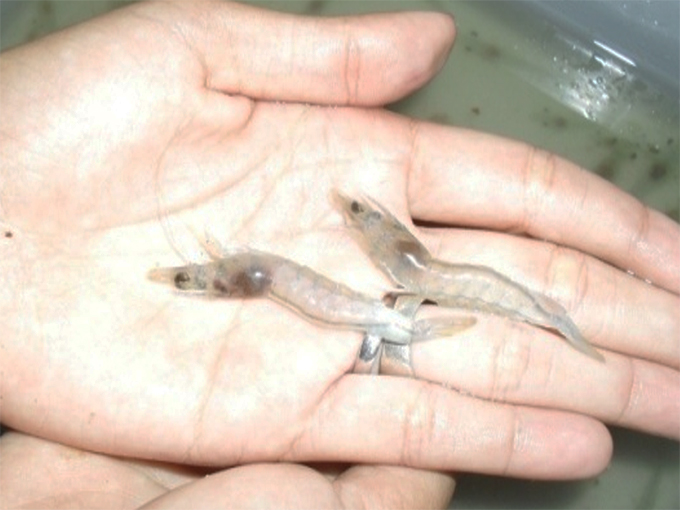
Aquafeeds
Rotifers and diatoms aid shrimp biofloc nurseries
Larval shrimp performance (feed conversion and final weight) in a biofloc nursery system improved with both added diatoms (Navicula sp.) and rotifers (Brachionus plicatilis).
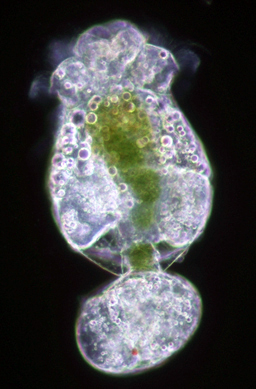
Health & Welfare
New-generation diets omit rotifer enrichment, improve water quality
An innovative new diet supports the mass culture of rotifers at the same time it transforms their nutritional composition to meet the requirements of first-feeding fish larvae. As in nature, the diet is based on a mixture of algae-based nutrients to which rotifers respond.
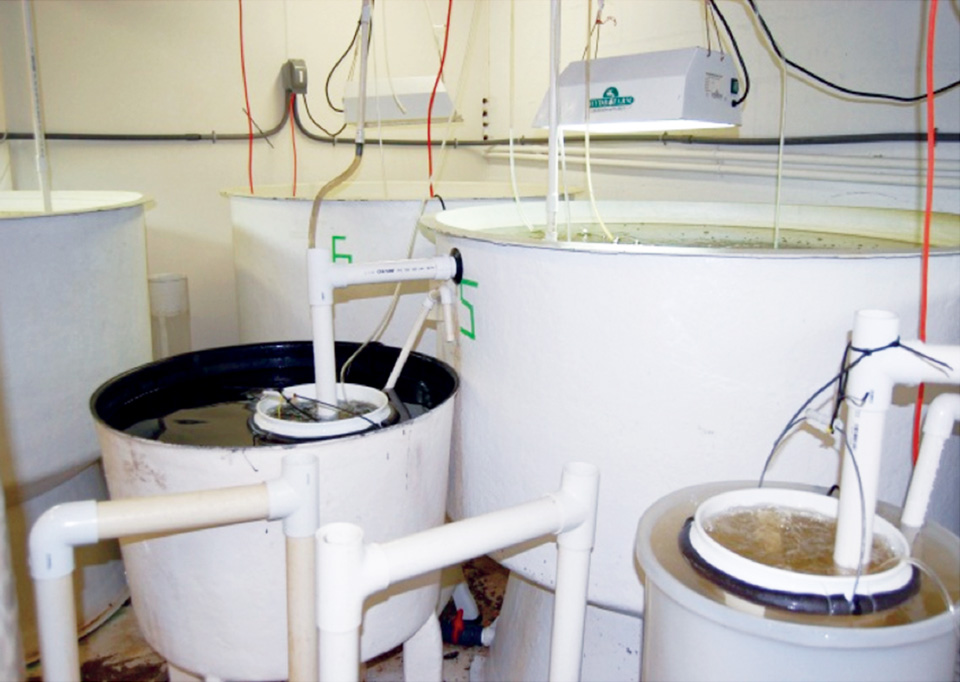
Health & Welfare
Advances in intensive copepod production technology
Research at the Oceanic Institute has been successful in overcoming bottlenecks associated with rearing small-mouthed fish larvae by finding a suitable first feed. Early work on the calanoid copepod Parvocalanus crassirostris focused on parameters necessary for successful maintenance of stock cultures.
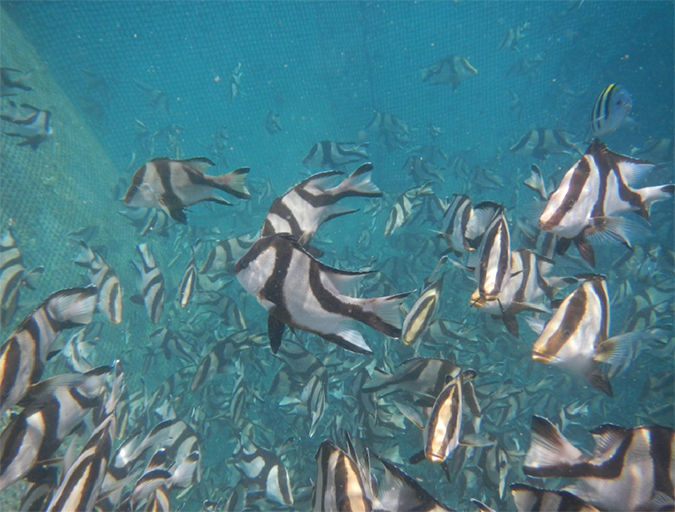
Responsibility
Assessing culture potential of red emperor snapper in New Caledonia
The red emperor snapper, known as “pouatte” in New Caledonia, is valuable throughout its broad geographic range and a highly valued food fish locally. Declining wild catches and market demand have provided the incentive to carry out technical feasibility studies to determine its commercial aquaculture potential.


